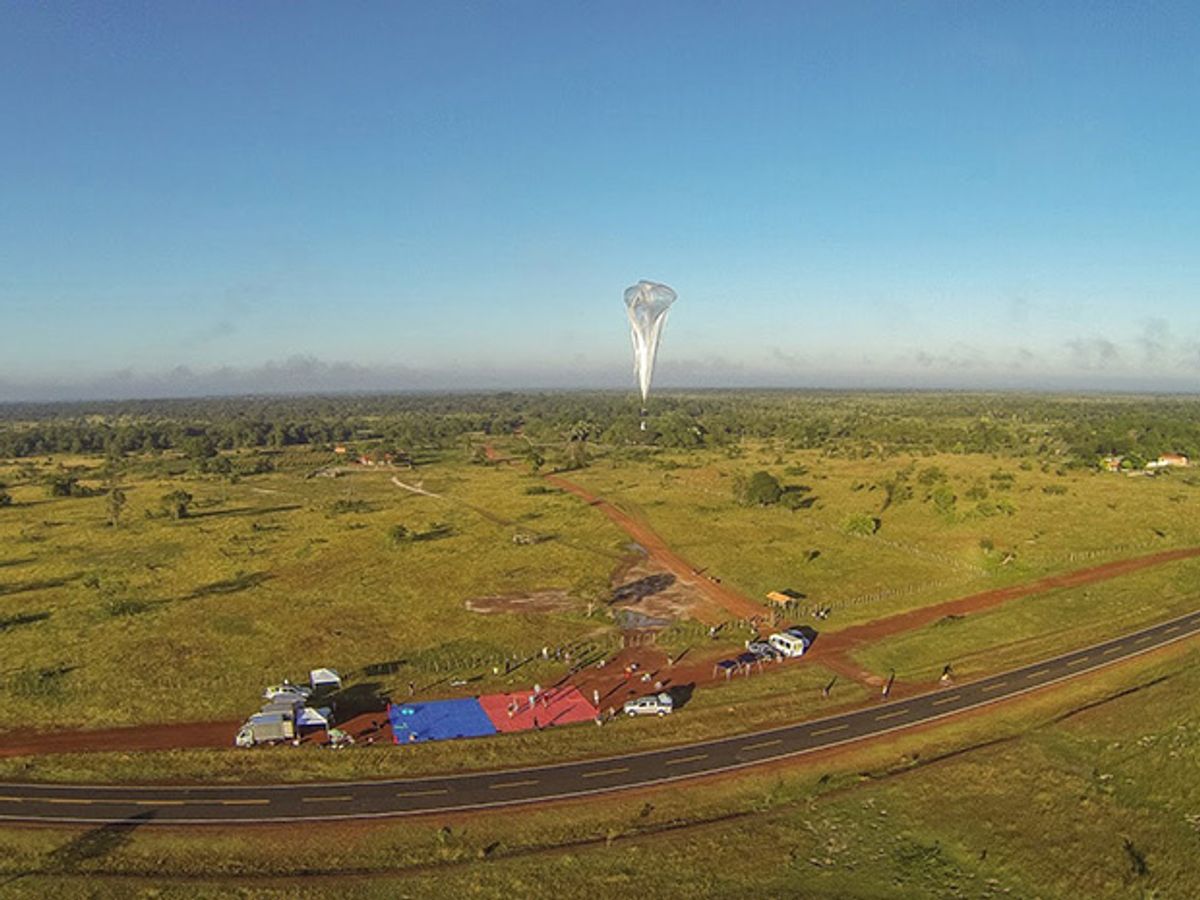A ring of balloons circling the Earth could begin delivering Internet service to mobile phone users in the Southern Hemisphere sometime in 2015. That's the vision of Google's Project Loon, an effort to get billions of people living off the grid in remote regions to join the rest of the world online.
The latest news about Project Loon comes from Astro Teller, head of the Google X lab, during a talk at MIT Technology Review’s EmTech conference in Cambridge, Mass. “In the next year or so we should have a semi-permanent ring of balloons somewhere in the Southern Hemisphere,” he told the audience. Google hopes its solar-powered balloons can use the LTE protocol of cell phones to provide wireless Internet at a rate of 5 megabits per second to mobile users—or as much as 22 Mbps to fixed antennas, according to Technology Review. The Internet giant has already begun holding trials in New Zealand and Brazil, Teller said.
But Google has more than one trick up its sleeve in its mission to spread Internet services worldwide. The Internet giant has either direct ownership or at least a strong stake in most of the five technological options previously highlighted by IEEE Spectrum as being capable of delivering wireless Internet services to the most remote corners of the Earth.
For instance, Google plans to invest billions in swarms of satellites capable of providing Internet services to regions in both hemispheres. Google also bought the startup Titan Aerospace, which plans to deploy high-flying, solar-powered drones capable of acting as "atmospheric satellites." Such flying platforms could complement the satellites and balloons in blanketing the globe with Internet service.
All these efforts could enable Google to reach the next several billion Internet customers who don't yet have access to reliable Internet service on their cell phones or other devices. But Google is not alone in the race to extend Internet to more people: Facebook also wants to extend its reach to those billions of untapped customers. The company previously flirted with the idea of buying Titan Aerospace, but has since launched its own in-house drone effort called the Connectivity Lab.
The Connectivity Lab aims to begin testing its own version of high-flying, solar-powered drones next year, Wired reports. Eventually, Facebook wants to deploy its drones to 21 locations in Africa, Asia, and Latin America sometime between the next two to five years. That means the five billion people still living offline might soon get to choose between two of the world's largest technology giants as their Internet providers.
Jeremy Hsu has been working as a science and technology journalist in New York City since 2008. He has written on subjects as diverse as supercomputing and wearable electronics for IEEE Spectrum. When he’s not trying to wrap his head around the latest quantum computing news for Spectrum, he also contributes to a variety of publications such as Scientific American, Discover, Popular Science, and others. He is a graduate of New York University’s Science, Health & Environmental Reporting Program.



